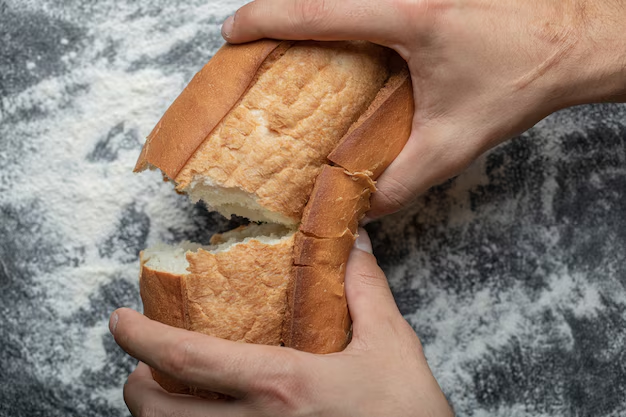Should You Keep Your Bread in the Refrigerator? How to Store Bread for Maximum Freshness
Bread. It's a simple, staple food that accompanies meals, serves as the base for sandwiches, and satisfies carb cravings. But when it comes to preserving its freshness, the question arises: should you store bread in the refrigerator? There’s quite a debate about this, and understanding the best way to store bread could extend its shelf life and make it taste better for longer. Let's dig into the specifics of bread storage and explore the possibilities.
Understanding Bread's Lifespan and Storage Needs
Bread, especially homemade or freshly baked, has a limited lifespan. The key to extending its shelf life lies in understanding its needs and factors that contribute to its staleness. Bread mainly goes stale due to the crystallization of starch molecules, a process called retrogradation, which hardens the crumb (the inner part of bread) and affects its texture.
Factors Influencing Bread's Freshness
Type of Bread: Different types of bread have different shelf lives. Whole grain and sourdough breads generally last longer compared to more refined white bread.
Humidity: Moisture in the air can cause mold to develop quickly.
Temperature: Bread stored at room temperature retains its texture more effectively than bread placed in colder environments.
Making sense of these factors gives us a basis for why and how bread storage impacts its duration of freshness.
Bread Storage Methods: Pros and Cons
Understanding how different storage methods impact bread helps weigh the options for keeping it fresh.
Room Temperature: The Traditional Method
Pros:
- Maintains Soft Texture: Storing bread at room temperature keeps it soft and maintains its desired chewiness.
- Accessibility: Bread is readily available for immediate use.
Cons:
- Mold Risk: In high humidity environments, bread can mold quickly unless consumed promptly.
- Short Shelf Life: Generally, bread can last just a few days on the counter before it starts to stale or mold.
Refrigerating Bread: The Controversial Method
Many people wonder if the refrigerator is a practical place for bread, given its cold environment.
Pros:
- Elevated Lifespan in Humid Areas: For those living in humid environments, refrigerating bread can help prevent mold by reducing moisture.
- Slow Mold Growth: Cooler temperatures inhibit mold growth better than room temperature, especially in highly humid conditions.
Cons:
- Texture Changes: Refrigeration is known to speed up staling, causing bread to lose its soft texture.
- Taste Alteration: Cold temperatures can dull bread’s flavor profile.
Freezing Bread: A Popular Alternative
Pros:
- Long-Term Solution: Freezing halts microbial and staling processes, extending the bread's shelf life for months.
- Maintains Flavor: When properly wrapped, the flavors and textures are preserved upon thawing.
Cons:
- Requires Planning: Bread needs to be thawed before consumption, requiring forethought.
- Freezer Burn Risk: If not wrapped correctly, bread can dry out or be compromised by freezer burn.
Best Practices for Bread Storage
After unpacking the pros and cons of each method, here are some practical strategies to ensure your bread remains fresh for as long as possible:
For Short-Term Storage (a few days)
Store in a Bread Box: Bread boxes provide a stable environment free from excess moisture, allowing bread to breathe while protecting it from mold.
Paper Bags Over Plastic: Paper bags allow slight air circulation, reducing moisture build-up.
Avoid Direct Sunlight: Sunlight can increase the temperature around the bread and hasten staling or mold growth.
For Longer-Term Storage (weeks to months)
Freezer Over Refrigerator: Use airtight bags or vacuum-sealed containers to freeze bread slices. Toast or heat them when needed to refresh their texture.
Use a Freezer-Safe Bag: Ensure that the bread is well-wrapped with minimal air exposure to avoid freezer burn.
Label and Date: Always label the bread with a freezing date to track its time in storage.
Freshness and Texture Tips
While storage is essential, there are tricks you can use to refresh bread and maintain its delightful texture.
Reviving Stale Bread
Use Water and Heat: Lightly dampen the crust with water and place the bread in an oven set at 350°F for 10-15 minutes. The heat rehydrates the bread, making it soft again.
Microwaving with a Damp Towel: Wrap a slighter damp towel around the bread and microwave for about 10 seconds.
Toast Stale Bread: Slices placed in a toaster return to a deliciously crisp state, perfect for breakfast or sandwiches.
Enhancing Flavor
Experiment with Butter or Olive Oil: Apply a light coating before toasting or heating, enriching the bread's flavor profile.
Pair with Complementary Ingredients: Using toppings like cheese, garlic, or herbs can enhance the enjoyment of otherwise bland, stale bread.
Key Takeaways: Bread Storage Tips for the Home
Here is a concise summary of the top tips for maintaining bread's freshness and texture, using a mix of emojis for emphasis:
- 🏠 Room Temperature: Ideal for short-term freshness if consumed quickly.
- ❄️ Avoid the Fridge: Only refrigerate if necessary, such as in very humid environments.
- 📦 Freeze Smartly: Best for long-term storage; wrap the bread well.
- 💦 Revive Effectively: Use water and heat to bring stale bread back to life.
- 🧂 Flavor Boosts: Enhance flavors with herbs, oils, and toppings.
By understanding these strategies, you can make the most of every loaf. Bread storage doesn’t have to be a dilemma; it’s about matching your storage method with your needs and environment.
Navigating Bread Storage: Empowering Choice and Flexibility
When it comes to storing bread, there is no one-size-fits-all answer. Environment, type of bread, and your consumption habits all play pivotal roles. By leveraging these insights, you can enjoy your bread in the freshest, most delicious state possible, whether crisp, toasted, or wonderfully soft. Experiment, adapt, and find what works best for you and your lifestyle.
